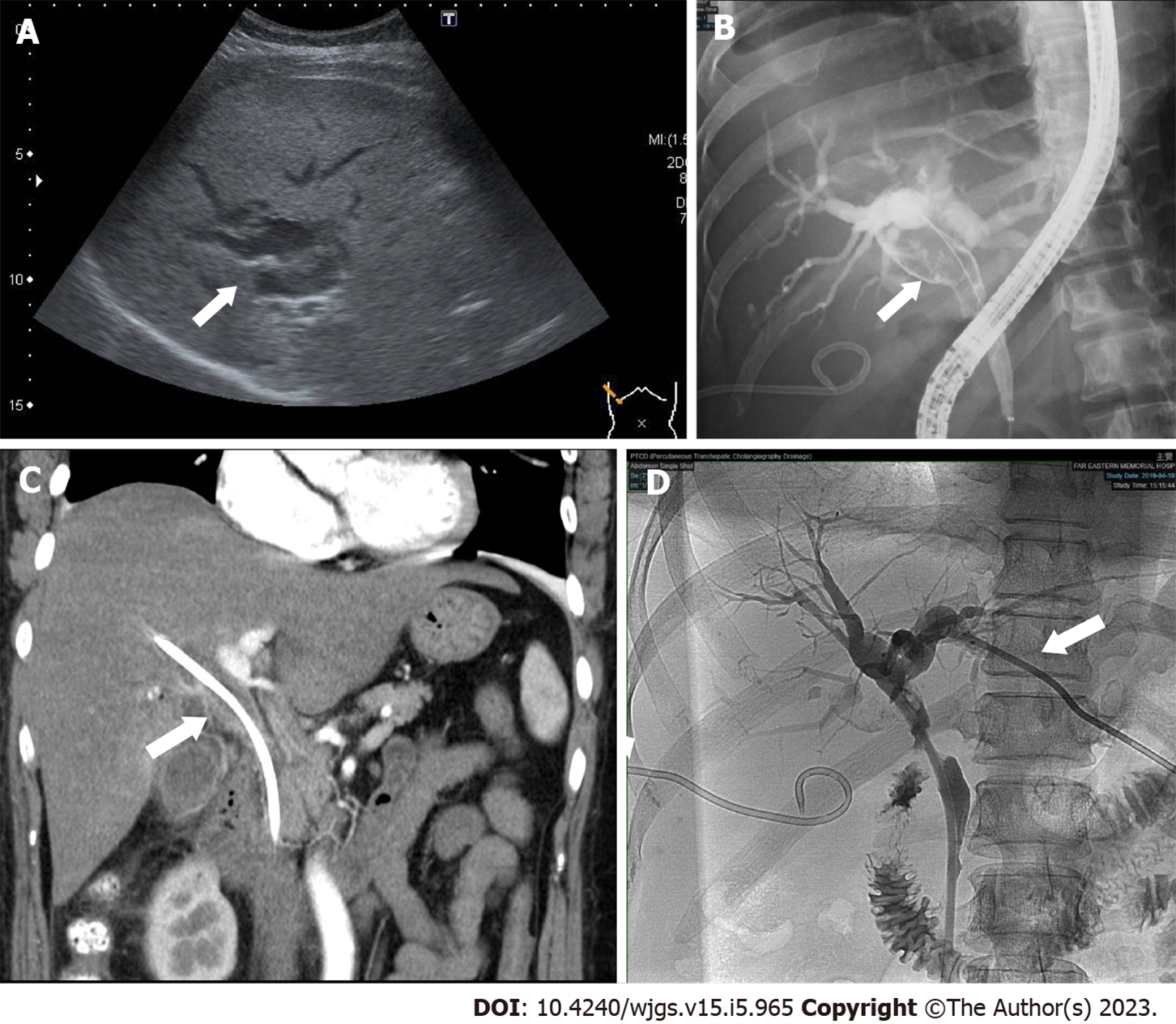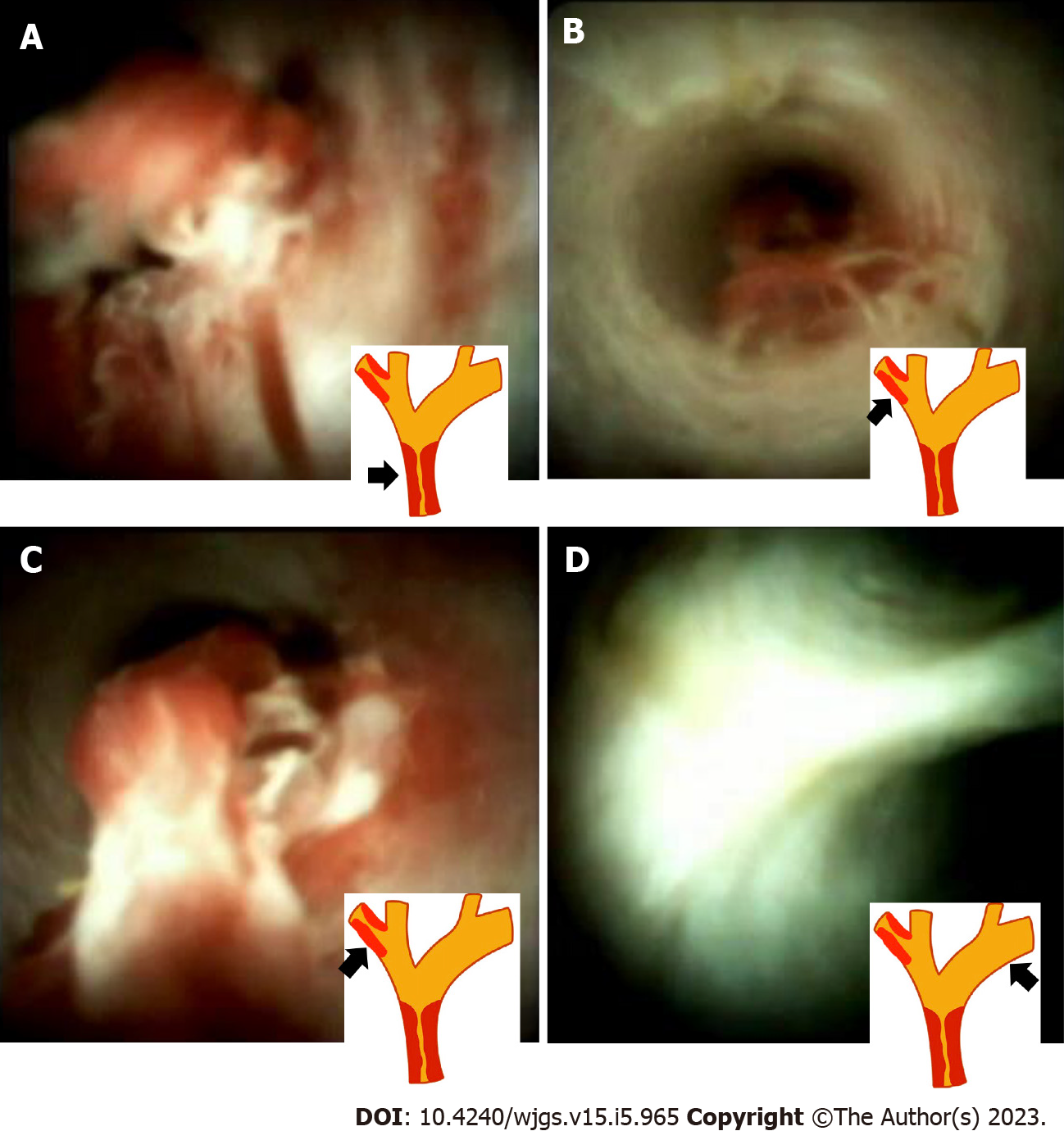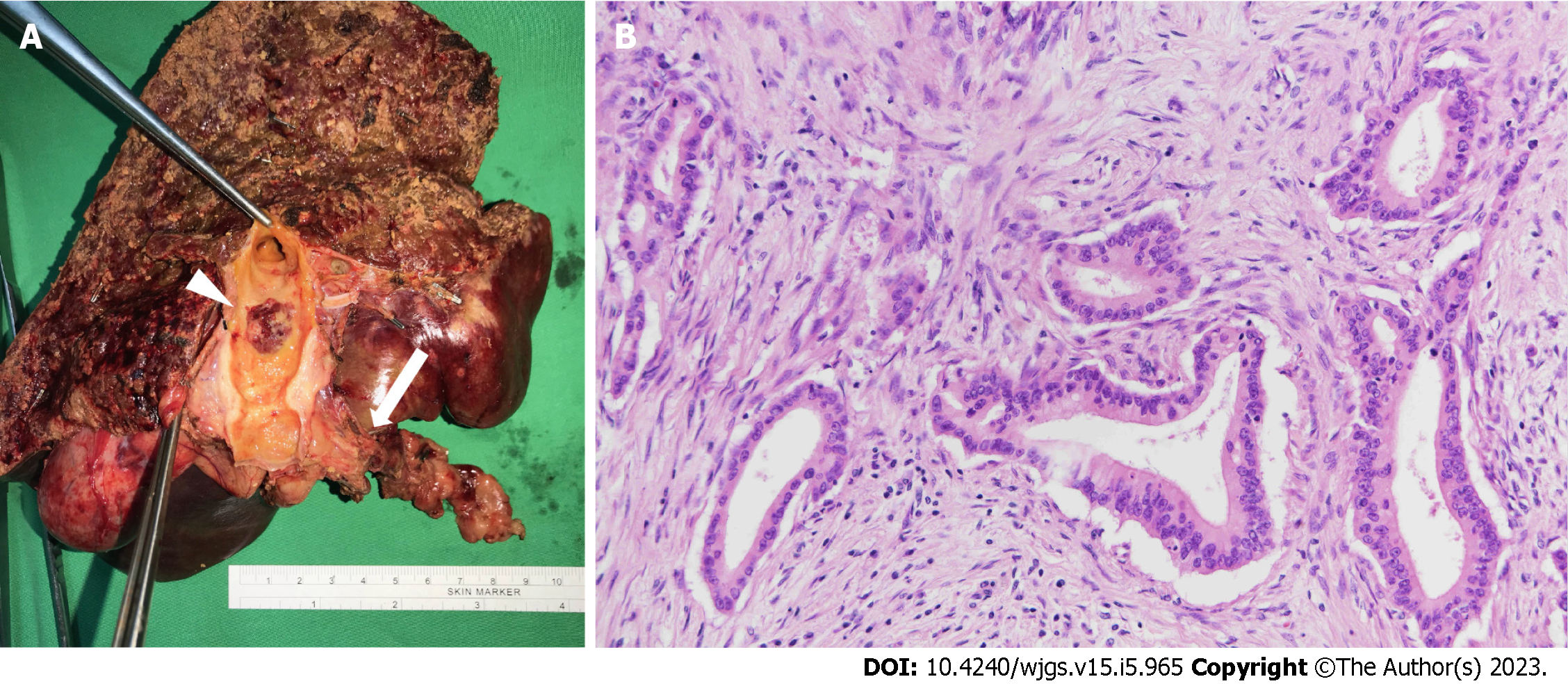Copyright
©The Author(s) 2023.
World J Gastrointest Surg. May 27, 2023; 15(5): 965-971
Published online May 27, 2023. doi: 10.4240/wjgs.v15.i5.965
Published online May 27, 2023. doi: 10.4240/wjgs.v15.i5.965
Figure 1 Imaging results.
A: Abdominal sonography showed dilated intrahepatic ducts (arrow); B: The cholangiogram revealed a long filling defect (arrow) from the proximal common bile duct (CBD) to the common hepatic duct; C: Contrast-enhanced computed tomography also showed soft tissue density (arrow) from the proximal CBD to the common hepatic duct; D: Percutaneous transhepatic cholangiography drainage (arrow) was performed on the left intrahepatic duct to alleviate jaundice.
Figure 2 SpyGlass cholangioscopy.
A: SpyGlass cholangioscopy showed one intraductal mass that involved bifurcation of the intrahepatic ducts; B: The far view of the skip lesion in the right posterior branch of the bile duct; C: The near view of the skip lesion, which was 2 cm proximally away from bifurcation of the common hepatic duct; D: Normal appearance of the mucosa in the proximal left intrahepatic duct.
Figure 3 The macroscopic and microscopic images of the lesions.
A: The main cholangiocarcinoma lesion (arrow) and skip lesion (arrowhead); B: Pathology of cholangiocarcinoma (hematoxylin and eosin, × 200 magnification).
- Citation: Chiang CH, Chen KC, Devereaux B, Chung CS, Kuo KC, Lin CC, Lin CK, Wang HP, Chen KH. Precise mapping of hilar cholangiocarcinoma with a skip lesion by SpyGlass cholangioscopy: A case report. World J Gastrointest Surg 2023; 15(5): 965-971
- URL: https://www.wjgnet.com/1948-9366/full/v15/i5/965.htm
- DOI: https://dx.doi.org/10.4240/wjgs.v15.i5.965











